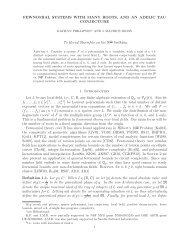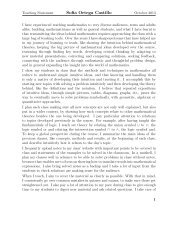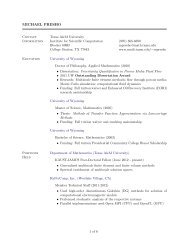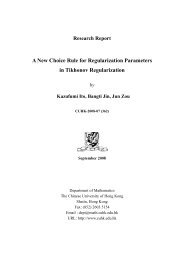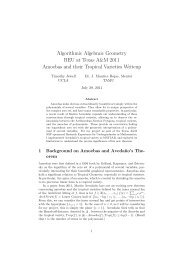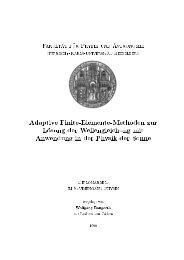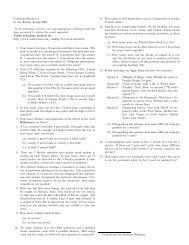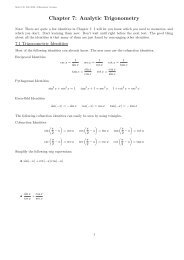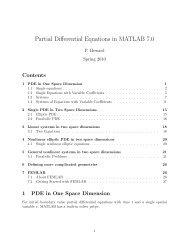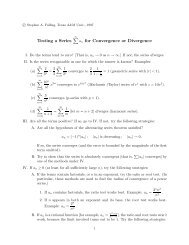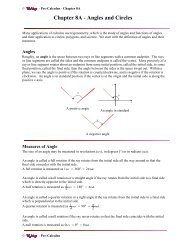Pythagoras and the Pythagoreans - Department of Mathematics
Pythagoras and the Pythagoreans - Department of Mathematics
Pythagoras and the Pythagoreans - Department of Mathematics
You also want an ePaper? Increase the reach of your titles
YUMPU automatically turns print PDFs into web optimized ePapers that Google loves.
<strong>Pythagoras</strong> <strong>and</strong> <strong>the</strong> <strong>Pythagoreans</strong> 15<br />
What about odd perfect numbers? As we have seen Euler characterized<br />
all even perfect numbers. But nothing is known about odd<br />
perfect numbers except <strong>the</strong>se few facts:<br />
• If n isanoddperfectnumber,<strong>the</strong>nitmusthave<strong>the</strong>form<br />
n = q 2 · p 2k+1 ,<br />
where p is prime, q is an odd integer <strong>and</strong> k is a nonnegative integer.<br />
• It has at least 8 different prime factors <strong>and</strong> at least 29 prime factors.<br />
• It has at least 300 decimal digits.<br />
Truly a challenge, finding an odd perfect number, or proving <strong>the</strong>re are<br />
none will resolve <strong>the</strong> one <strong>of</strong> <strong>the</strong> last open problems considered by <strong>the</strong><br />
Greeks.<br />
5 Figurate Numbers.<br />
Numbers geometrically constructed had a particular importance to <strong>the</strong><br />
<strong>Pythagoreans</strong>.<br />
Triangular numbers. These numbers are 1, 3, 6, 10, ... . The<br />
general form is <strong>the</strong> familiar<br />
1+2+3+...+ n =<br />
Triangular Numbers<br />
n(n +1)<br />
.<br />
2



